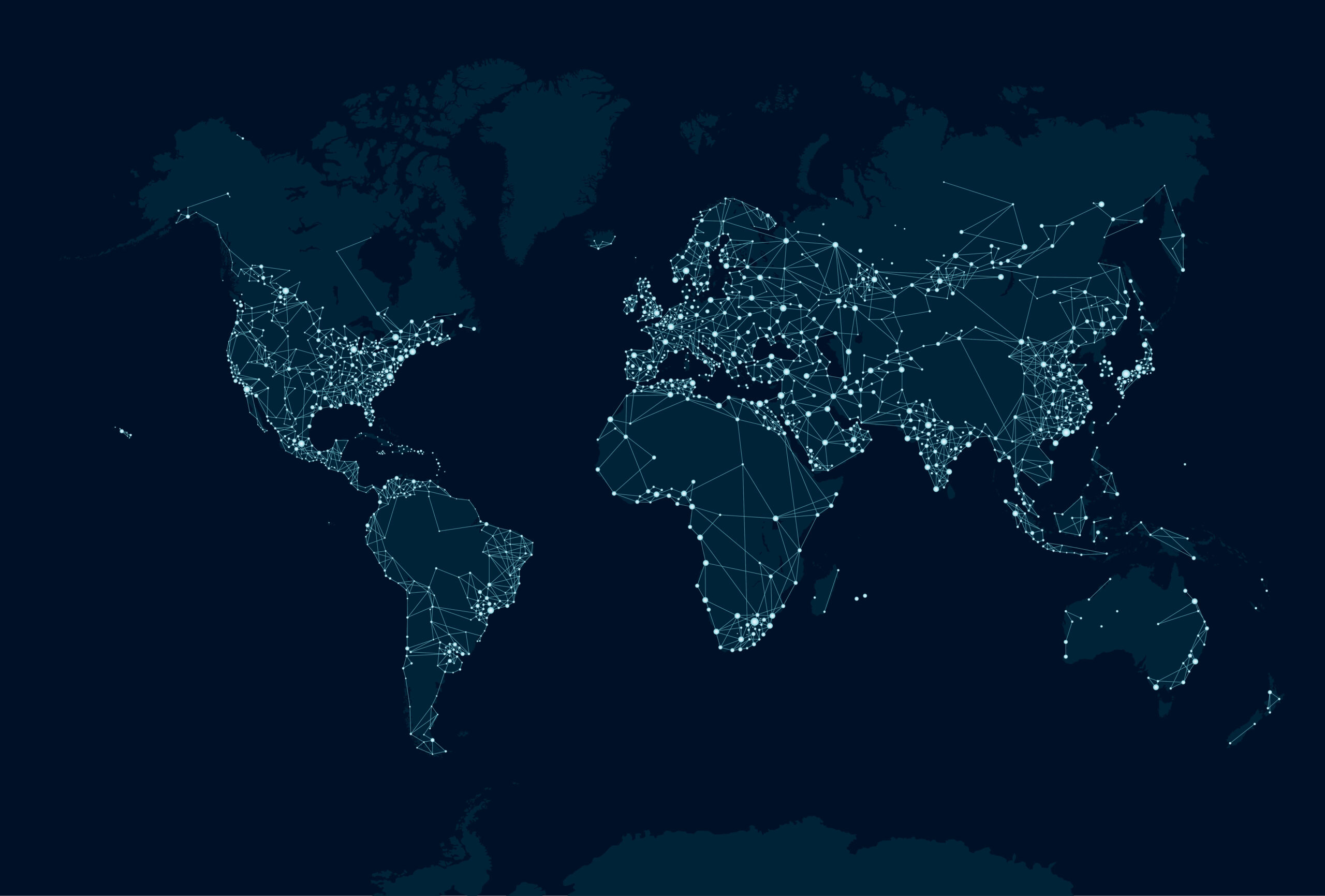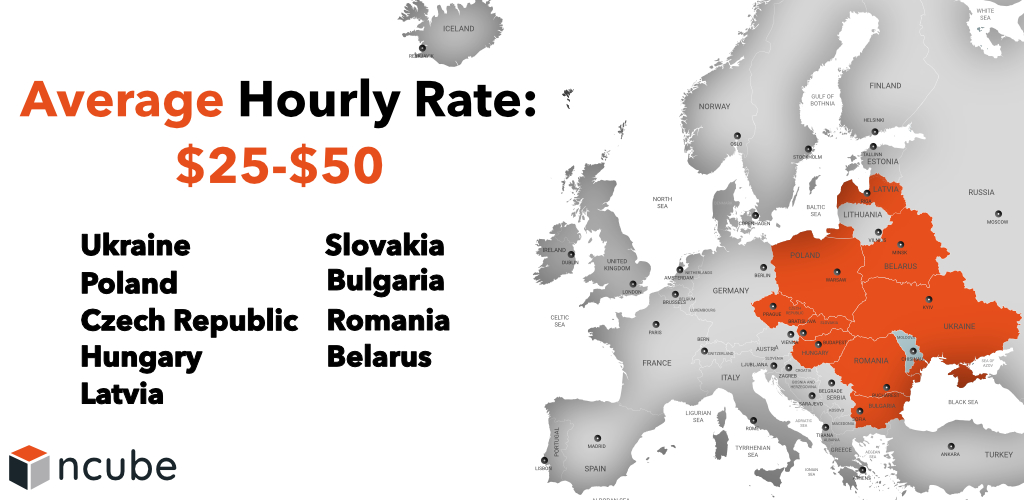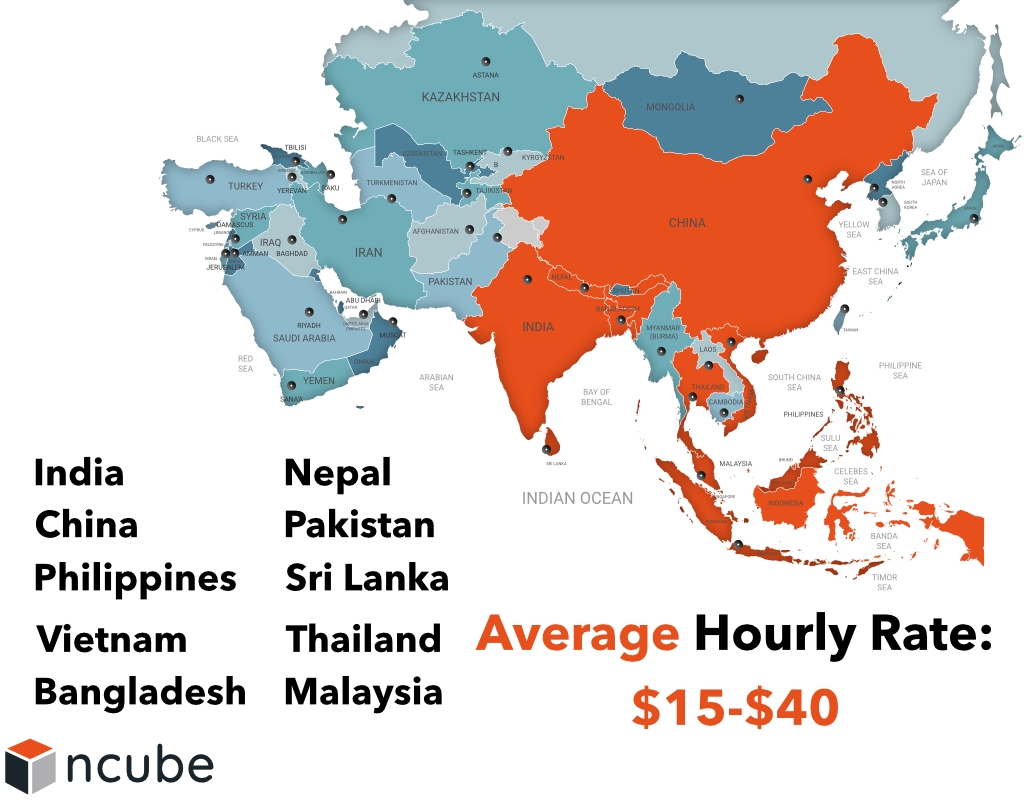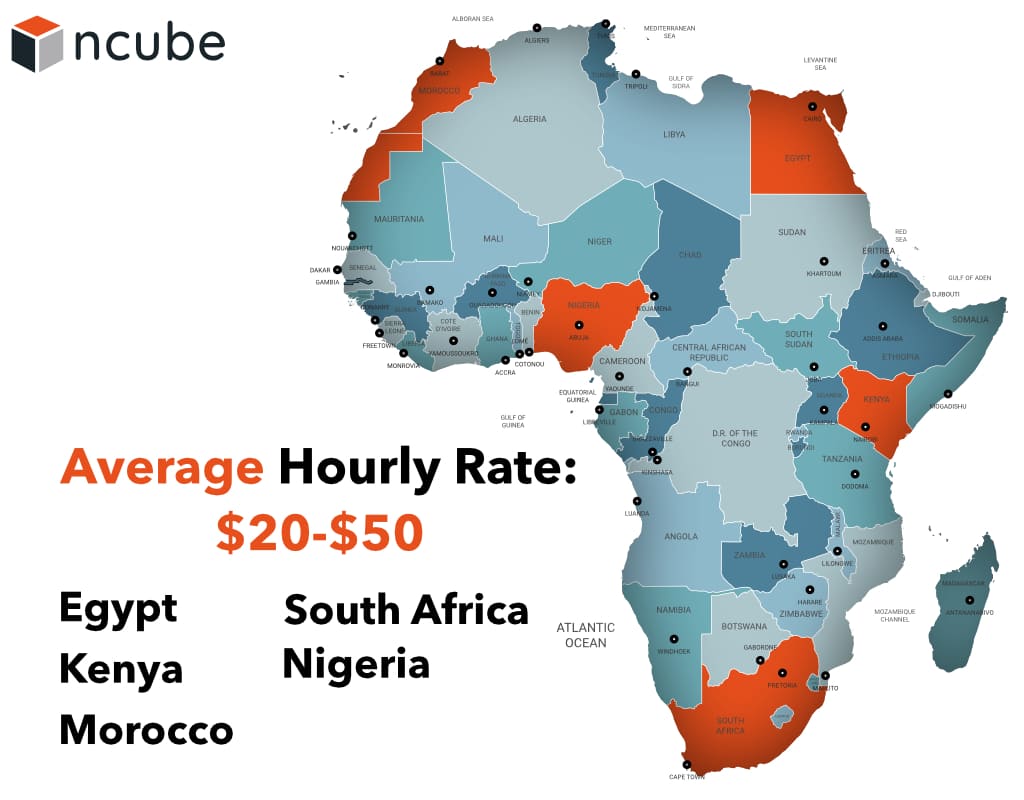
Your Guide to Offshore Software Development Rates by Country

As a viable way to save costs and access talent with various backgrounds, offshore software development has become increasingly popular in recent years. If you’re considering going with this approach, your options range from sourcing offshore developers via one of the freelancing platforms to cooperating with a virtual team partner. The latter is typically the most convenient way to handle offshore software development.
The common question is: How much does it cost to hire offshore developers? Typically, offshoring development rates boil down to several factors, a geographic location being the most significant rate determinant.
In this article, we take a look at software development rates in the most popular offshoring destinations, so you can make an informed decision when choosing the offshoring development destination.
Offshoring development rates: Central and Eastern Europe (CEE)

Chances are you’re not only aiming to reduce the cost of development but also want to source highly qualified software engineers. Then, Central and Eastern Europe (CEE) is the best way to go.
CEE boasts over 1 million software engineers, which makes it an attractive offshoring development destination. With the growing number of IT professionals, the region’s countries have taken significant steps to foster the development of their IT markets.
Generally, IT specialists based in CEE are deemed to offer a higher quality of work than their Asian counterparts, which can be attributed to the fact that offshore developers in this region have access to strong, Europe-quality academic education.
When it comes to the number of offshore developers, Poland takes the lead with roughly 225,000 professionals involved in software development offshoring. Ukraine is ranked second with nearly 185,000 IT specialists. According to PayScale, both countries are well-positioned to offer competitive rates, with an average of $15 per hour.
Offshoring development rates: Asia

Asia spans many countries and includes cost-effective and expensive offshore destinations, offering a variety of offshoring development rates. For example, in India, one of the largest and most cost-effective offshoring software development destinations, you can hire an offshore developer for under $20 per hour. The downside of such an offshoring destination is a significant time zone difference and increased managerial effort associated with managing a team that constitutes people with a different mentality and work ethics.
China also plays strong in the offshore software development field, offering similar to CEE’s offshoring rates in the range of $25–$40 per hour. While the price-quality ratio is more than reasonable, a significant concern is IP protection. On the other hand, the Chinese government supports the IT industry by providing economic incentives and investing in technology parks where offshore developers can develop professionally.
Other countries of the region, such as Japan, Vietnam, Indonesia, and Malaysia can be a good option, given the quality to cost ratio. Offshore developers in Japan can earn only $20 per hour on average, even though the country is rightfully considered to be the cradle of cutting-edge technologies. Senior engineers in the countries mentioned above usually charge $30–$40 per hour.
Asia’s peculiarity is that it has an equal number of highly skilled vs. semi-skilled offshore developers. An offshore software vendor that has entered the global IT market is likely to charge as high as $30-$60 for a full-time offshore developer. As such, if you are not willing to roll the dice, it’s best to consider other regions, where moderate hourly rates for offshore software development and high-quality software solutions aren’t such a rare combination.
Offshoring development rates: Latin America

Latin America is well-positioned to be the preferred offshore software development region for US-based companies. The geographic proximity enables the teams to synchronize effortlessly, communicating in real-time. In addition, the continent offers cultural and social affinity, as well as high English proficiency.
The ease of travel is a fundamental reason why North American companies decide to choose this region. The geographical proximity allows visiting the offshoring development squad regularly, which is more challenging with European and Asia-based teams.
Although software development rates in most Latin American countries are higher than in Asia or Eastern Europe, offshoring development remains a viable way to develop software compared to sourcing local resources.
The hotbeds of offshore software development include Brazil, Argentina, and Mexico, where the hourly offshoring development rates vary between $30–$50. Cheaper options include Chile, Panama, Costa Rica, and Peru, where a full-time offshore developer charges between $15–$25.
Offshoring development rates: Africa

Africa is a new entrant in the software offshoring market. Currently, the IT job market in Africa is far from being an offshoring development hot spot like Eastern Europe or Asia.
According to Accelerance, South Africa, Egypt, Morocco, Tunisia, Kenya, and Nigeria are the most promising countries that spearhead the continent’s IT industry. Morocco, Egypt, and Kenya offer the average offshore development rate of $20.
Offshore software development rates are higher in Nigeria, and South Africa since the job market in those countries is less saturated, making it hard to find highly qualified offshore developers at moderate prices. Tunisia and Morocco are the preferred destinations for French-speaking countries, whereas the rest of the continent is a vast Arabic and English-speaking talent pool.
Final thoughts: software development offshoring with nCube
Offshore development rates depend on where you are hiring a team, and thus can vary drastically. Typically, they stay in the range of $15-50 per hour.
What should you consider when hiring an offshore developer? The rates are affected by an offshore developer’s experience, seniority, and background. Needless to say that the more experience an offshore developer has, the more they will charge.
The countries of Latin America top the list of countries with the highest rates for software development offshoring. On the other hand, Eastern Europe offers a vast pool of qualified talent at moderate prices. In contrast, the Asian and African IT job market is filled with low-rate job seekers, so choosing this region may save you money but will not guarantee a high-quality end product.
We at nCube have been building development teams of Ukrainian developers for over a decade. We work for Western companies that chose Ukrainian developers for their strong tech background, problem-solving mindset, and high English proficiency. Contact us for more details on our offshoring development model.
Recommended articles


